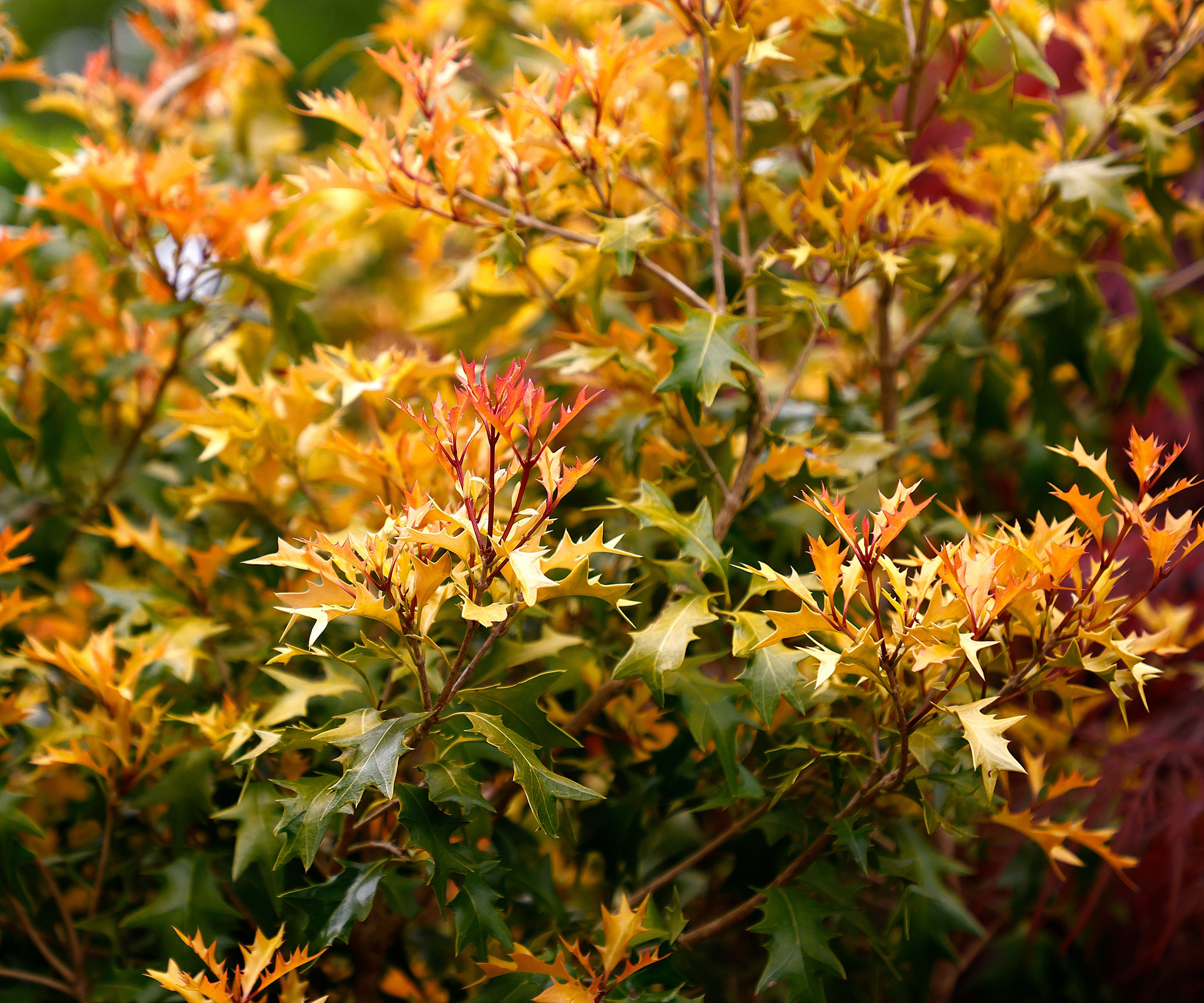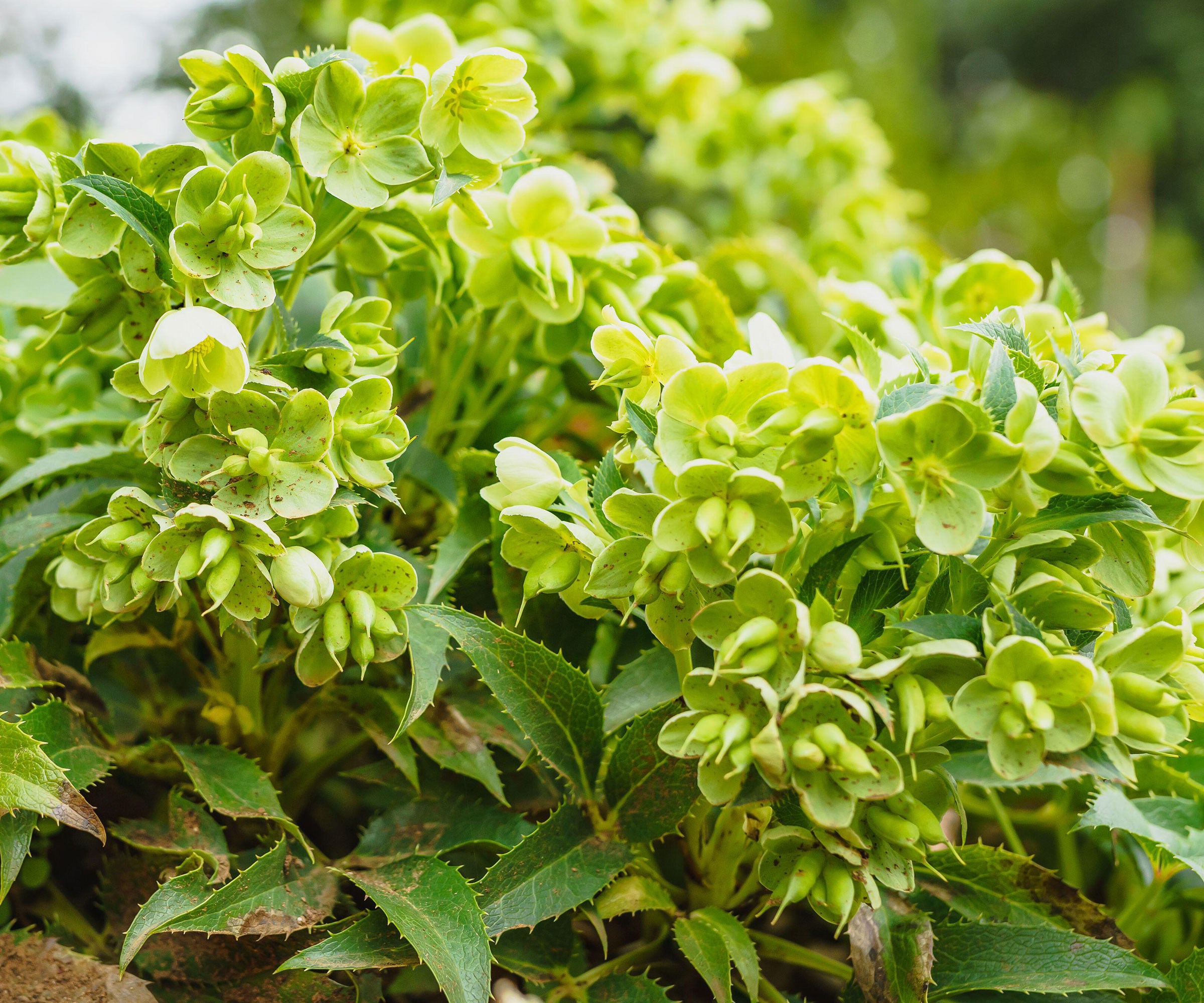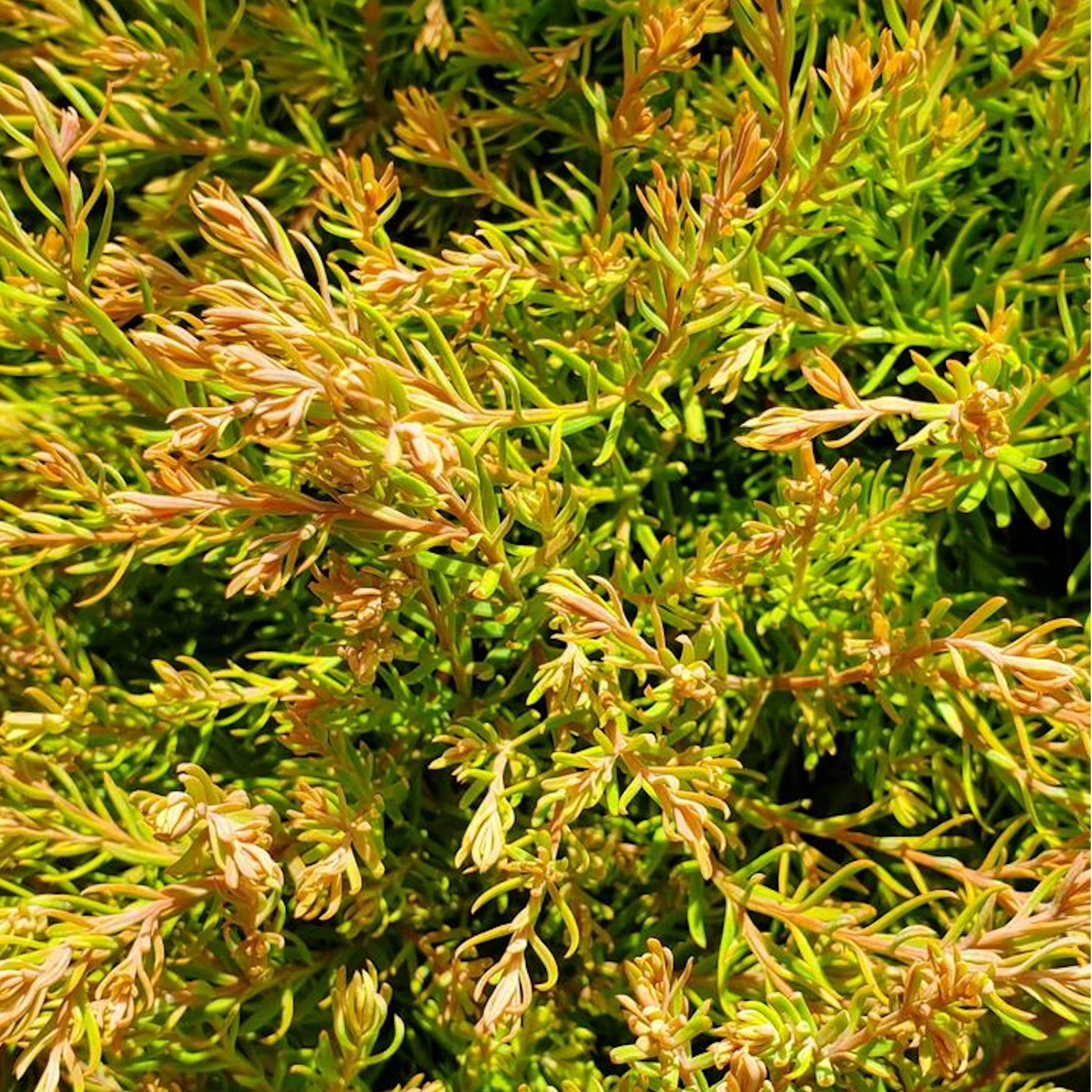Holiday Evergreen Plants: 9 Unique Evergreens For Holiday Cheer That Can Last All Year!
Not all holiday evergreen plants conform to the traditional standard, so get ready to broaden your mind and brighten your festive spirits with these unique holiday evergreens


When you think of a holiday evergreen, you’ll probably imagine pines, firs and spruces. There’s nothing wrong with making a little room in your hearts and homes for traditional evergreen displays. But there are other gorgeous evergreen options that can lend a more individual feel to your season of celebration. And unlike more typically festive choices which can quickly feel out of kilter with the rest of the gardening calendar, these unique holiday evergreen trees and shrubs will naturally extend the goodwill into the new year for agreeable garden options all year round.
Whether you’re looking to make a personal statement with signature flourishes of foliage and berries, an out-of-the-ordinary evergreen for a container, a burst of unconventional color or just a twist on traditional pine needles, these unique evergreen trees and shrubs bring both seasonal cheer and year-long peace and harmony. If you want low maintenance evergreen shrubs and trees with a difference, you can buy many of these plants at our GKH shop, and they also make cool green gifting ideas. Read on for nine distinctive selections to shake up the season – and beyond!
Choosing Unique Holiday Evergreens for Sustained Year-Long Interest
Forget everything you thought you knew about the Christmas evergreen! These shrubs, plants and trees will defy expectations about festive foliage. Several of the evergreen options listed here are neither conventionally festive looking nor green, for that matter – but they are all technically evergreens. So while we’re not saying you need to abandon firs and spruces, there’s plenty here to brighten up your seasonal celebrations and elevate your evergreen horizons well into the new gardening calendar.
Above and beyond their value as gifting options, many of these unique evergreen shrubs, trees and plants have serious staying power. Alongside options with berries and needles, you’ll find modern twists on conventional festive staples, quirky cultivars for impactful garden color themes, seasonal shrubs you can grow on as a quirky ground cover or privacy screens, plants that wouldn’t be out of place in cut flower gardens, and potted evergreens that can even be harvested for culinary creations!
1. Juniper ‘Blue Star’

If the name doesn’t tip you off as to this shrub’s festive credentials, the luxuriant teal blue foliage should do the trick. Juniperus squamata 'Blue Star' is a dwarf evergreen that develops into a compact mound of rich blue-gray needles with similar tinted seed cones, so it somehow manages to combine elements of traditional seasonal cheer with something quite surreal. Given its diminutive stature and slow growth rate, these evergreens can sit out the festive season in containers quite happily.
Once you’ve packed away the tinsel and baubles, you can then choose whether or not to keep this dwarf conifer in a tub (terracotta preferred) or plant it out as a specimen or as a ground cover plant. They do well in rock gardens and dry, sandy soils. Apart from a low risk of twig blight, creeping juniper shrubs are delightfully straightforward to maintain and will add a dash of smoky teal character to borders and rockeries for years to come.
2. False Holly ‘Goshiki’

Green is just one of several colors you’ll be enjoying if you make a little room for this unusual glossy broadleaf shrub in your seasonal evergreen shortlist. It might sound a little predictable to be suggesting holly in my roundup, but trust me when I tell you there is nothing obvious about this novel holly alternative. Drought tolerant and disease resistant, Osmanthus heterophyllus ‘Goshiki’ plays around with seasonal tones in a natural festive pyramid shape.
Sign up for the Gardening Know How newsletter today and receive a free copy of our e-book "How to Grow Delicious Tomatoes".
Its name, Japanese for ‘five colors’, should give you an inkling of the tonal variety you can expect, dancing between younger tones of russet and red and more mature notes of variegated gold and cream. You could say this Christmas evergreen tree is self-decorating! Growing to 5-8ft (1.5-2.5m) tall, ‘Goshiki’ takes a variety of planting situations in her stride once the holidays have drawn to an end. All she needs is moist, well draining soil and a yearly feed in spring. Perfect as a unique accent in borders and hedges in USDA zones 6-8.
3. Thuja ‘Fire Chief’

Add a dash of sizzle to the season with this smoking hot arborvitae cultivar. Its reddish tipped foliage transforms into a deep red bundle of compact shrubby splendor during the holiday period, before settling back into a charming fusion of bright green, gold and orange. Another fine dwarf Christmas evergreen plant, Thuja occidentalis ‘Fire Chief’ will require minimum space, filling out a container to just a few feet high.
Planted out as a foundation, specimen or border plant, there’s plenty to love about this shrub once the holiday festivities are over. Cold-hardy, disease resistant and deer resistant, it is also naturally inclined to retain its globular shape, so you won’t need to fuss over it with loads of snipping and shaping. Yet planted out as part of a series, this plant also makes an excellent privacy shrub, thanks to its relative density. Show-stopping shrubs were never more serene than this blazing beauty.
4. American Wintergreen (Checkerberry)

For such a relatively unassuming member of the blueberry clan (Ericaceae), the American wintergreen plant has adopted a massive selection of names, including checkerberry, boxberry and Eastern teaberry. You won’t find the checkerberry (Gaultheria procumbens) on many festive wishlists, but it is remarkably appropriate to the season. Those quiet-looking mats of dense foliage start flushing up a storm as winter chills deepen. By the time you’re hanging up your stockings, those glossy leaves have made quite the transformation.
Depending on the cultivar, teaberry plants shift from green to red, purple and bronze as if in celebration of the holidays. Some breeds, like ‘Winter Splash’, blush pink across the variegated surface of the leaves. In addition, many wintergreens produce festive red berries adored by wildlife. Once you finish using them to festoon holiday containers, they thrive in shady spots as ground cover staples in USDA zones 3-7. Like their blueberry cousins, the cold-hardy American wintergreen grows best in acidic soils.
5. Dwarf Pine ‘Connecticut Slate’

Yes, pine trees can be traditional and unassuming – but they can also be dramatic and unexpected. Dwarf white pine ‘Connecticut Slate’ delivers a quirky twist on the conventional Christmas conifer. Its compact showing of densely packed needles presents like a cloud of feathery gray-blue needles, giving it a fluffier appearance than the typical festive pine. This white pine will sustain well through the holidays in a large, heavy container, as long as you don’t keep it indoors too long.
An unheated garage, shed or porch offers the best growing conditions over winter, before moving it out to a patio when temperatures rise. To keep dwarf pine trees healthy, choose a neutral or slightly acidic potting medium, with a mulch to keep the base cool and moist, and apply a slow-release feed in spring. You can also plant Pinus strobus as a foundation or border tree, where it can reach 6ft (1.8m). Quick growing and manageable, it is happy growing in USDA zones 3-8 in full sun or partial shade.
6. Eucalyptus Tree

You might not think of eucalyptus trees as evergreen, but technically they are (though they do replenish their leaves after about a year of growth). For gardeners after a unique Christmas evergreen that makes a bold aromatic statement, the eucalyptus plant will certainly deliver, exuding a distinctively woodsy, honey-mint fragrance. And depending on the eucalyptus tree type you select, their papery foliage can shimmer with silver-blue or cloudy gray discs of leathery foliage. Lovely gifted or planted in large pots.
Happiest grown in USDA zones 7b or as potted ornamentals under glass in colder regions, the main requirements of the silver dollar or gum tree (Eucalyptus spp.) are plenty of sunshine and well draining soil. Drought tolerant and easy to keep, just bear in mind that if you are keeping yours in a container, certain cultivars can grow 10-30ft (3-4.5m) tall, and some even taller! So pick the largest pot you can manage with plenty of drainage, and don’t be afraid to prune each year to help maintain shape and height.
7. Bearberry ‘Massachusetts’

Bearberry (aka bear’s grape or kinnikinnick) is a low-growing native that often falls through the cracks, quite literally, as a plant with a reputation for straddling rocks. Hardly any wonder the berries produced by this intrepid ground cover shrub are associated with Fozzie, Baloo and Yogi (bear, that is) – but ‘Massachusetts’ is also suitable for holiday gifting and displays. Its glossy foliage is dramatically tinted in hues of red, purple and bronze through the winter season, before reverting to green in spring.
It’s a genuine delight to keep Arctostaphylos uva-ursi ‘Massachusetts’ around once the party’s over, simply because it is so unfussy and quick to take in areas where many other plants refuse to grow. Content to flourish in poor soil and shady spots as well as rocky terrain, this bearberry plant will quickly settle in a rockery or even a crumbling stone wall. Winter hardy and disease resistant, it’s also great for slopes, gravel corners and coastal gardens. Or just keep it in a container! Happy in USDA zones 2-6.
8. Lenten Rose (Hellebore)

One of my favorite winter plants, regardless of holiday connections, the Lenten or Christmas rose (aka the hellebore) is an unassuming perennial evergreen. But at the chillier end of the calendar year, it doubles up as the gorgeous gift that keeps on giving. Its delicate clumpings of broadleaf evergreen foliage burst forth with ethereal winter hues of burgundy, purple, pink, green and cream as the holiday season gets under way. Seemingly coated in a fine dusting of festive snow, these showy cup-shaped blossoms guarantee a medley of seasonal cheer.
As long as you keep plants protected from harsh winter winds, these cheerful evergreen perennials will keep going long after the holidays. Commonly single flowering, although there are double hellebore varieties available, you can expect these unique evergreens to bloom well into spring. Quietly maintaining an even keel through the rest of the year, hellebores make reliable ground cover plants reaching 12-15 inches (30-40cm) and thrive in USDA 5-8 in dappled light and partial shade.
9. Sweet Bay Laurel

You might be thinking this is a radical choice for a holiday evergreen. Yet Laurus nobilis is one of the original wreath makers, as legend has it the leaves of this plant were fashioned into garlands to adorn the winning athletes of the first Olympic games. So when you think about it, sweet bay (aka bay laurel) is a natural choice if you’re after unique evergreen trees for the holidays that can help out with those decorative wreaths. And unlike your traditional evergreens, this one has the added benefit of helping out in the kitchen as well.
The fragrant, leathery leaves of this evocative evergreen have a robust quality, like a fusion of pine and cloves, making them highly suitable to the holiday season. However, the plant itself is frost tender and will need a little help if you’re going to help it flourish beyond the holidays. It thrives in a large, deep pot, kept well drained and sheltered from stiff winds or sharp dips in temperature, before growing on in a sunny spot (south or east facing) in spring.
Frequently Asked Questions
What are the Best Flowering Holiday Evergreens?
Winter-flowering camellias are a good choice if you would like a holiday evergreen with dramatic blooms as well as lush, shiny foliage. While not conventionally grown for year-round foliage, one of my favorite evergreens with specifically winter appeal is the hellebore or lenten rose, which produces masses of green, purple, maroon, pink and white blooms from November to spring.
Some of the prettiest flowering evergreens won’t necessarily flower during the holiday weeks, but if you do grow them or grant them as gifts during the holidays, you can be sure they will extend their interest well into the new year. Evergreens like magnolia and winter daphne produce dramatic and delicate pinky white blooms (and also exude a charming fragrance).
What is the Most Aromatic Holiday Evergreen?
Several holiday evergreens have a distinctive fresh aroma, including eucalyptus and bay leaf. Generally, though, it is the flowers of other evergreens such as gardenia that tend to exude the most delectable scents. But one of the most aromatic tied to the holidays is one we don’t tend to think of as an evergreen plant – and that’s rosemary.
Once as popular a festive plant as holly, rosemary has mass potential as a holiday plant for decorative live displays (and garlands) with a uniquely potent fragrance. To make your rosemary more aromatic, avoid fertile soils (keep things poor, sandy and well drained). A little mycorrhizal fungi can also help to amplify the natural scents of rosemary plants.
This article features products available from third party vendors on the Gardening Know How Shop.

Janey is a former assistant editor of the UK’s oldest gardening magazine, Amateur Gardening, where she worked for five years. For the last few years, she has also been writing and editing content for digital gardening brands GardeningEtc and Homes & Gardens. She’s taken part in a range of conservation and rewilding projects for the Royal Horticultural Society (RHS) and the British Trust for Conservation Volunteers (BTCV) as a way of exploring her horticultural horizons. She is currently undertaking her RHS Level 2 certificate in The Principles of Plant Growth and Development.





